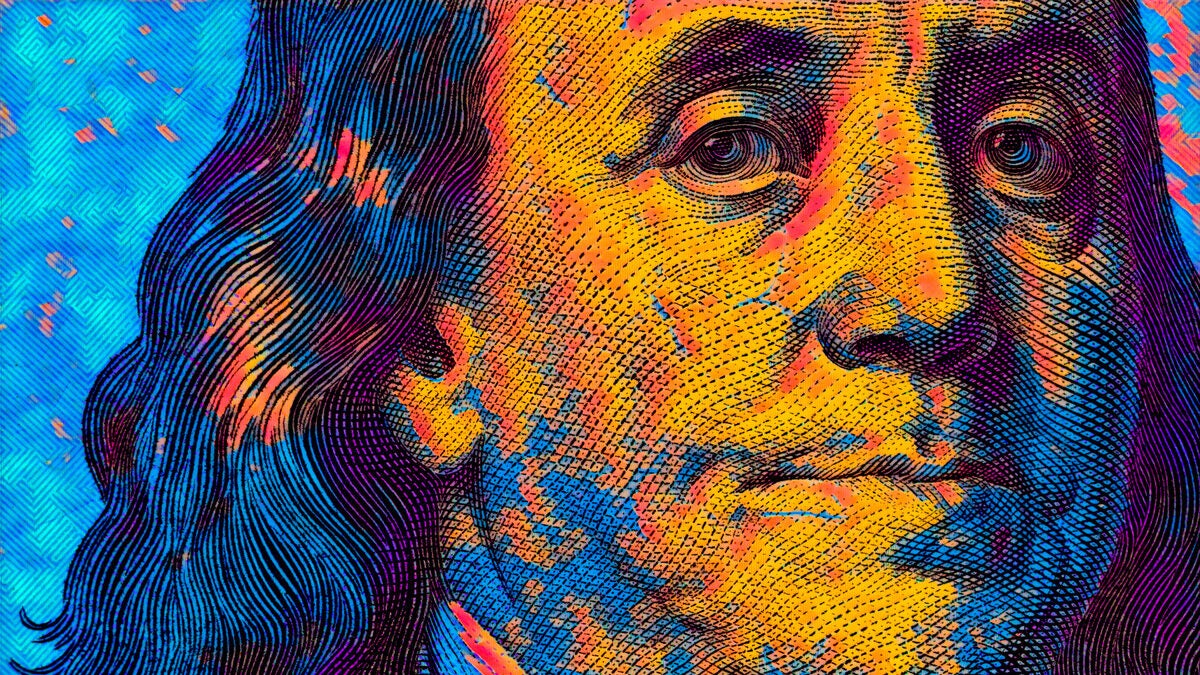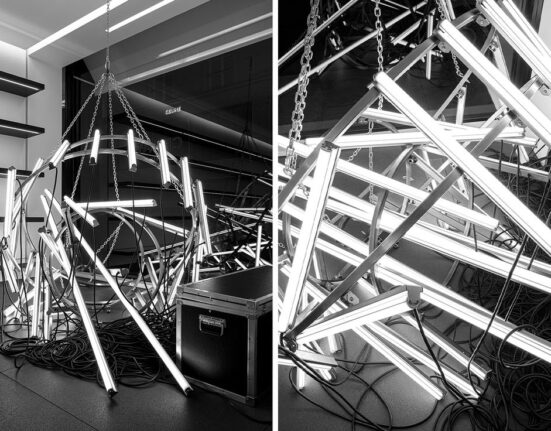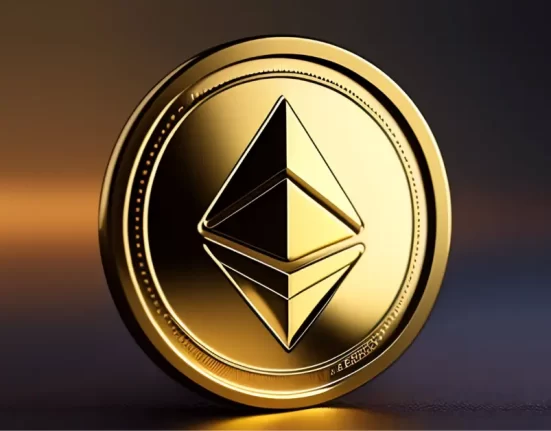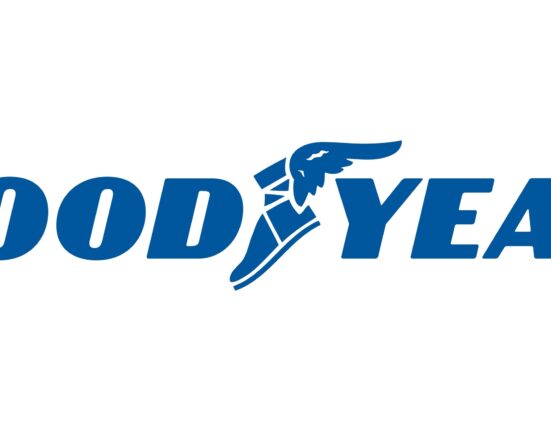Alternative investments can range from liquid categories such as futures, options, commodities and hedge funds, to less liquid assets such as property, wine or even fine art.
The art market, in particular, has captured growing interest as a viable investment channel. According to a 2023 report by investment bank UBS and Art Basel, the U.S. holds a leading position in the global art market, accounting for 45% of sales by value.
Moreover, the U.S. art market has seen one of the most robust post-pandemic recoveries among major countries. Art sales in the U.S. increased 8% year over year in 2022, reaching $30.2 billion, the highest level to date.
“There are several reasons to consider art as an alternative investment,” said Mary-Kate O’Hare, global co-head of art advisory and finance and senior art advisor at Citi Private Bank. “First, as a valuable asset, art can offer both financial and emotional rewards to a collector. Second, art can be a wealth holder, potentially appreciating over a long period of time if properly cared for. Lastly, art can be part of a collector’s legacy and handed down through generations.”
Given the promising landscape, investing in art might be worth considering as part of a well-rounded financial strategy. Here’s everything you need to know about investing in the art market.
How do you invest in art?
Like other assets, investing in art begins with understanding your financial objectives, risk tolerance and time horizon.
“Collectors should buy art that they love, but do so with an awareness of an artist’s/artwork’s current market value, sales history and investment potential,” O’Hare said.
1. Physical Ownership
For those who have an affinity for art and wish to physically own pieces, direct purchases at auctions or from galleries offer a traditional route. Buying art this way allows you to both enjoy the artwork and potentially profit from its appreciation over time. But this method often involves a deep understanding of the art market and the intricacies of valuation and appraisal.
“The key is to take the time to research, learn and above all, look at as much art as possible,” O’Hare said. Before buying, she recommends collectors research:
- The artist’s past market performance.
- Museums that collect and exhibit the artist’s work.
- The artist’s historical and critical reception.
- The historical quality of an artwork and its rarity.
Physically collecting art also requires a good amount of face-to-face contact and industry networking for success.
“Cultivating relationships with dealers, auction specialists and curators can also be beneficial,” O’Hare said. “Collectors should visit museums, galleries and auction previews, and read up on artists and periods that they find of interest.”
2. Fractional ownership
For investors who prefer a more transparent, hands-off and possibly less capital-intensive way to invest in art, fractional ownership platforms like Masterworks are an increasingly popular and accessible alternative to physical collection.
These online platforms allow multiple people to invest in a single piece of art by purchasing shares. This approach democratizes access to high-value artwork and comes with the benefit of professional management, though it usually entails management or commission fees.
3. Company ownership
Another option is to invest indirectly through publicly traded companies associated with the art world. Publicly traded companies like Artnet (ART.DE) focus on art auctions, while others like Adobe (ADBE) and Etsy (ETSY) are more broadly related to the creative industry. Investing in these companies can offer exposure to the art market’s growth without owning actual artwork.
4. Art financing
Indirect access to the art market can also be accomplished through art financing, said Sarah McDaniel, managing director and head of the art resources team and UHNW content and analytics at Morgan Stanley Private Wealth Management.
“By providing funding for an art transaction, one receives interest and future repayment of principal backed by art with a market value subject to market fluctuations,” she said.
Pros and cons of investing in art
The world of art is not only a realm of creativity and beauty, but it can also serve as a unique investment opportunity. As with all investments, diving into the art market comes with its set of advantages and drawbacks.
Pros
One of the key attractions of investing in art is the potential for high returns. For instance, artwork from Banksy listed on the Masterworks platform has boasted a 32% annualized return. It’s crucial to note these kinds of returns highly depend on the specific artist and artwork and are by no means guaranteed.
Another advantage is the diversification that art can bring to an investment portfolio. The returns from art can be less correlated with traditional assets like stocks and bonds, which means adding art to your portfolio can provide an extra layer of diversification. Essentially, the return on art can zig when the stock market zags, potentially offsetting losses.
Lastly, investing in art offers the unique benefit of owning a physical, tangible asset that can be personally enjoyed. For enthusiasts, the joy and cultural value of showcasing a beautiful piece of art in their home can be a reward in itself, apart from any financial gains it may bring.
Cons
On the flip side, a significant disadvantage of investing in art is its illiquidity. Unlike stocks or bonds that can be readily sold on public markets, selling a piece of art can be a complex and time-consuming process that may not guarantee immediate funds.
Another drawback to consider when investing in art is the absence of cash flow. Unlike traditional investments like stocks, which may pay dividends, or bonds, which yield interest, art does not provide any interim income.
This means any returns you realize entirely depend on the asset appreciation over time. The need for demand to drive up value can make art investments particularly susceptible to short-term fads and trends, adding a layer of risk to consider.
Investors also need to be aware of the lower level of regulation and transparency in the art market compared to more traditional investment avenues. While stock market investors use financial ratios to value a company, the art industry doesn’t have standardized valuation metrics. The lack of standardized information can make it challenging to accurately appraise the value of an artwork, leading to higher risks.
That’s why O’Hare recommends buying from reputable galleries and auction houses.
“Due diligence is extremely important when collecting art,” she said. “Receiving and maintaining proper documentation is key, including bills of sale as well as certificates of authenticity and import/export documentation.”
Finally, the costs associated with art investment can be substantial. This can include auction fees, dealer commissions, and insurance and storage costs for physical artworks. In the case of fractional ownership, you might also have management fees or trading fees imposed by the platform. All these costs can eat into the potential returns from your art investment.
Different types of art to invest in
When it comes to the types of art you can invest in, the landscape is incredibly diverse. There are many options depending on your investment goals, risk tolerance and areas of interest. Here are a few to consider:
1. Blue-chip art
The most well-known is blue-chip art, which refers to works created by artists who have a long history of stability and high demand in the art market. This is a stock market term used to describe companies that are nationally recognized, financially sound and have a long history of reliable performance. Just as blue-chip stocks represent large and recognized companies, blue-chip art refers to works by artists who have stood the test of time and are considered a solid investment in the art market.
These are typically artists who may have passed away, are widely recognized and whose works are often featured in major museums and private collections. Examples include works by figures like Leonardo da Vinci, Rembrandt, Monet, Banksy, Andy Warhol, Jackson Pollock and Vincent van Gogh. Works in this category are not just pieces of art; they are pieces of history, often representing the pinnacle of a particular style or era.
Because of its established reputation, blue-chip art is often seen as a lower-risk investment. However, it’s highly sought after by both private collectors and museums. Given their historical importance and extreme scarcity, these works often command very high prices when they do come to market and can be more challenging to acquire due to their high demand and limited availability — unless fractional, securitized ownership is offered.
2. Emerging art
Emerging art is on the other end of the spectrum. These are works by up-and-coming artists who are in the early stages of their careers and are gaining recognition but have not yet fully established themselves in the art world.
“There is the risk that the market in a particular artist or period might decline in favor,” O’Hare said. “This risk is heightened with more speculative markets, such as emerging art.”
Investing in emerging art is riskier, but it also presents an opportunity for higher returns, especially if the artist gains significant recognition after you’ve acquired their work. Because these artists are still making a name for themselves, the cost of entry is often much lower compared with blue-chip art.
3. Non-fungible tokens
Investors can turn to digital art via non-fungible tokens, known as NFTs, which use blockchain technology for verification and ownership rights. Examples include CryptoPunks — which are 10,000 unique 24 by 24-pixel art characters on the ethereum blockchain — and the Bored Ape Yacht Club, where ownership of a hand-drawn cartoon ape grants a virtual yacht club membership.
“In the context of art and collectibles, an NFT is typically a unique digital representation of a good, such as a work of art,” McDaniel said. “It’s akin to a certificate of authenticity and gets recorded on a digital database that often serves as a decentralized public ledger.”
Is art a valuable investment?
The value of an art investment is primarily determined by two factors: The price you initially pay for the artwork and the price you eventually sell it for. Numerous variables can influence both these factors, such as the artist’s reputation, demand for their work, availability of a willing buyer or market, and additional costs, including storage, insurance and transaction fees.
“Just like picking individual securities, success depends on which (works) you buy and how you buy/sell them, including public or private transactions,” McDaniel said, adding that the time of year and geographical region plays a role in the price.
It is important to be aware of the disadvantages of art as an asset class, experts say. Those may include exceptionally high transaction costs, lack of transparency, potential illiquidity, unfavorable tax treatments, potential fraud and forgery and moving expenses, she said.
As a physical investment, art also has risks that can impact its value. To avoid fraud, McDaniel recommends verifying an artwork’s authenticity, title and documentation. “Additionally, the condition of a work of art invariably profoundly impacts its value,” she said, “so careful measures should be taken to ensure that the art is well-protected and properly insured.”
That said, it’s worth noting that the art market has, in general, appreciated at a steady rate over time. According to Sotheby’s Mei Moses Index, which tracked the broad art market from 1950 to 2021, the annualized average return has been 8.5%. While this is promising, it’s slightly below the S&P 500’s average annualized total return of 11.54% during this period, which includes price appreciation and reinvested dividends, over the same period.
When should you invest in art?
The question of when to invest in art often leads to the issue of market timing, which is generally not advised for either traditional or alternative asset classes like art.
Instead of trying to time the market, it’s more productive to consider your time horizon. In other words, how long do you plan to hold the art? Your time horizon will help guide your investment strategy and can assist in choosing between options like physical art and fractional ownership.
Once you’ve determined your time horizon, it’s important to consider any transaction and management costs associated with the investment. For physical art, these could include costs for storage, insurance and possibly restoration. If you’re looking into fractional ownership, keep in mind there may be management fees or trading fees depending on the platform you choose.
After these considerations, assess your available capital to see if an art investment aligns with your financial situation at the moment. Once you have a clear understanding of these factors, you’ll be better equipped to decide whether now is the right time for you to invest in art.
Frequently asked questions (FAQs)
Determining the best way to invest in art is a personal decision that hinges on your investment objectives, risk tolerance and time horizon.
If you’re someone who appreciates the aesthetic value of art and is comfortable with an illiquid investment, you might prefer to buy physical works directly. This allows you to own, appreciate and possibly profit from the physical art piece, though it often involves navigating the complexities of the appraisal and valuation process.
On the other hand, if you’re looking for a more transparent and regulated way to invest in art — and you’re starting with a smaller amount of capital — fractional ownership platforms could be a better fit. These online platforms allow you to own a portion, or “share,” of an artwork, making high-value pieces accessible to a broader range of investors.
For those interested in indirect exposure to the art world, investing in publicly traded companies related to the art industry is an option. This could include anything from well-known art marketplaces like Etsy to companies that provide technology, materials or services that support the art industry, like Adobe.
No. You don’t need to be a millionaire to invest in art. The democratization of art investing through various online platforms allows average investors to benefit from the potential upside of art ownership. This includes appreciation in value, without needing the substantial capital traditionally required to purchase high-quality artworks outright.
There are also platforms like Masterworks that allow you to invest in art through fractional ownership, which means you own a share of an artwork rather than the entire piece. You can start investing with $15,000 in capital on this platform. Some platforms offer lower minimum initial investments, making art investment attainable for a broader range of people.
Investing in art doesn’t necessarily mean purchasing physical works; you can also invest in art through publicly traded companies engaged in the art industry. These companies can range from auction houses to art suppliers and even technology platforms that serve the art world.
However, the question of which art stock is best ultimately depends on your risk tolerance and investment objectives. It’s also important to note that buying shares in art-related companies is not the same as direct investment in art pieces.
Some publicly traded companies involved in art include:
- Artnet (ART.DE) – Artnet operates an online platform for art auctions and also provides art market analytics. It serves as a resource for those looking to understand market trends and valuations.
- Takung Art (TKAT) – Takung operates an online platform that allows artists and art dealers to trade shares of artworks. This offers a unique model for investing in art assets.
- Adobe (ADBE) – Though not exclusively an art company, Adobe’s software tools are widely used in the creation of digital art, including pieces that may be sold as NFTs.
- Etsy (ETSY) – Etsy is an online marketplace where artists can sell handmade items and artistic work directly to consumers. It’s also a popular platform for art supplies.
The decision to invest in NFT art should be carefully weighed against your individual risk tolerance, investment objectives and your understanding of the cryptocurrency and NFT landscape.
Unlike traditional art, NFT art exists in a digital format and is bought and sold using cryptocurrency. It’s essential to understand that the NFT art market is still in its nascent stages, characterized by extreme volatility and regulatory uncertainty. This makes it more of a speculative venture rather than a traditional investment opportunity.
The UBS and Art Basel report sheds some light on the risks associated with NFT art. After peaking in late 2021 at $2.9 billion, sales of art-related NFTs experienced a steep decline to just under $1.5 billion, representing a 49% year-over-year slump.







